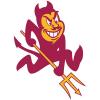I just got a 28-200 14" bandsaw with riser kit from the late 60s. I've been playing around with adjustments and it seems that the blade should be centered better between the top guide blocks. And perhaps more importantly, the back of the blade should sit in front of the back bearing better. On some cuts I'm finding that the blade kind of shifts to the right (off of) the bearing. I don't see a way to adjust this. Any suggestions?
delta_BS_upperguides.jpg




 Reply With Quote
Reply With Quote


